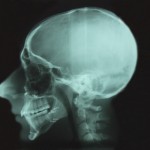
Prior to orthodontic diagnosis a range or records may be obtained, typically these include, dental models, radiographs and facial and intra-oral photographs. Advances in digital technology means that 3D technology is also available. However, the role and use of any or each of these elements of the record set is unclear. Therefore the aim of this review was to estimate the contribution and importance of different diagnostic records for making an orthodontic diagnosis and treatment plan.
Searches were conducted in PubMed, Embase, the Web of Science, Scopus and the Cochrane. Reference lists of included studies were also searched and there were no language restrictions. Studies where patient records were used for an orthodontic diagnosis and/or treatment plan; and at least two different types of records are compared and the outcome variable of the study was change in treatment plan were included. Two authors carried out study selection and quality assessment independently. Study quality was assessed using the QUADAS-2 tool. A single reviewer extracted data and a second reviewer checked it.
- 17 studies met the inclusion criteria only 4 were considered to have a low risk of bias.
- Two main groups of studies were identified those not focused on impacted teeth (12 studies), and studies focusing on impacted teeth (5 studies).
- A qualitative summary of the 4 high quality (low bias) studies was reported.
The authors concluded
Only a few high quality studies are available concerning records needed for orthodontic diagnosis and treatment planning. From the selected high quality studies, it can be concluded that for orthodontic treatment planning:
- cephalograms are not routinely needed for Class II malocclusions;
- digital models can be used to replace plaster casts;
- CBCT radiographs may be indicated for impacted canines.
Based on the findings of the present review, the minimum record set required for orthodontic diagnosis and treatment planning remains undefined.
Comment
With the development of digital technologies,particularly 3-D imaging which has potential to increase radiation dosages it is appropriate to review the contributions of the various potential elements of the orthodontic record for diagnosis and monitoring of orthodontic conditions. However the conclusions from this review are only based on 4 high quality studies so much further information is needed before definitive answers are available. In relation to 3-D imaging the authors note the European SENDENTEXT Guidelines project in their discussion which has a wide range of good information on Cone Beam CT use.
Links
Rischen RJ, Breuning KH, Bronkhorst EM, Kuijpers-Jagtman AM. Records needed for orthodontic diagnosis and treatment planning: a systematic review. PLoS One. 2013 Nov 12;8(11):e74186. doi: 10.1371/journal.pone.0074186. PubMed PMID: 24265669.

The minimum record set required for orthodontic diagnosis and treatment planning remains undefined http://t.co/7Q4tB9P5nb Sin evidencias!
[…] Dental Elf – 28th Nov 2013 – The minimum record set required for orthodontic diagnosis a… […]